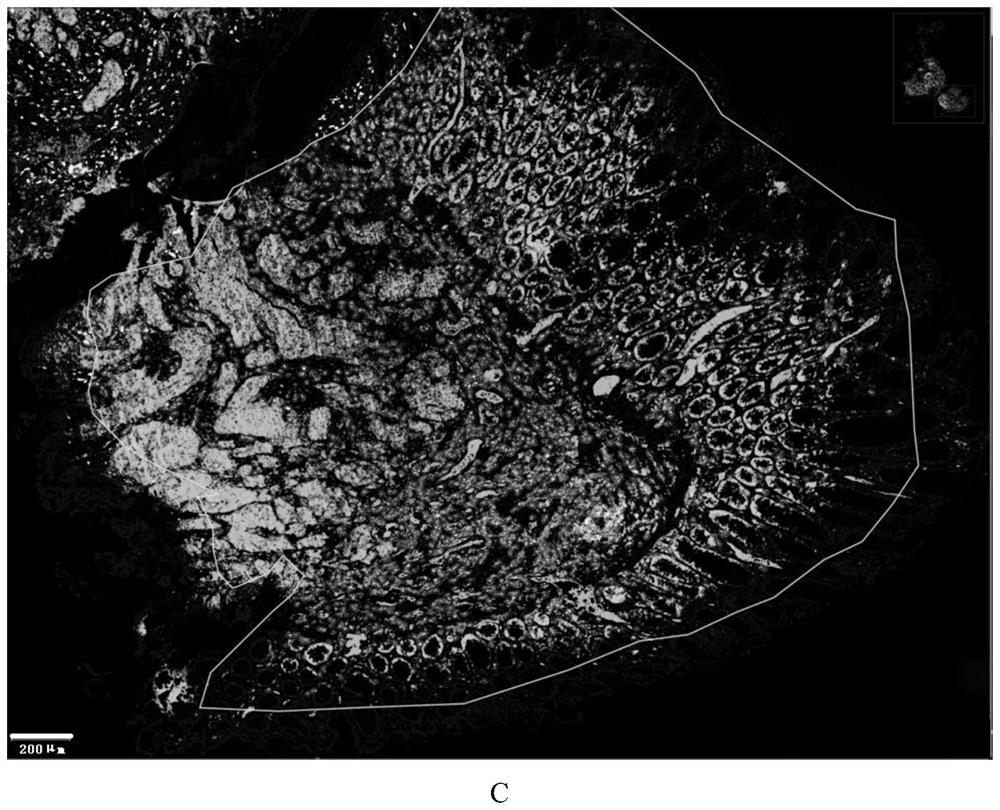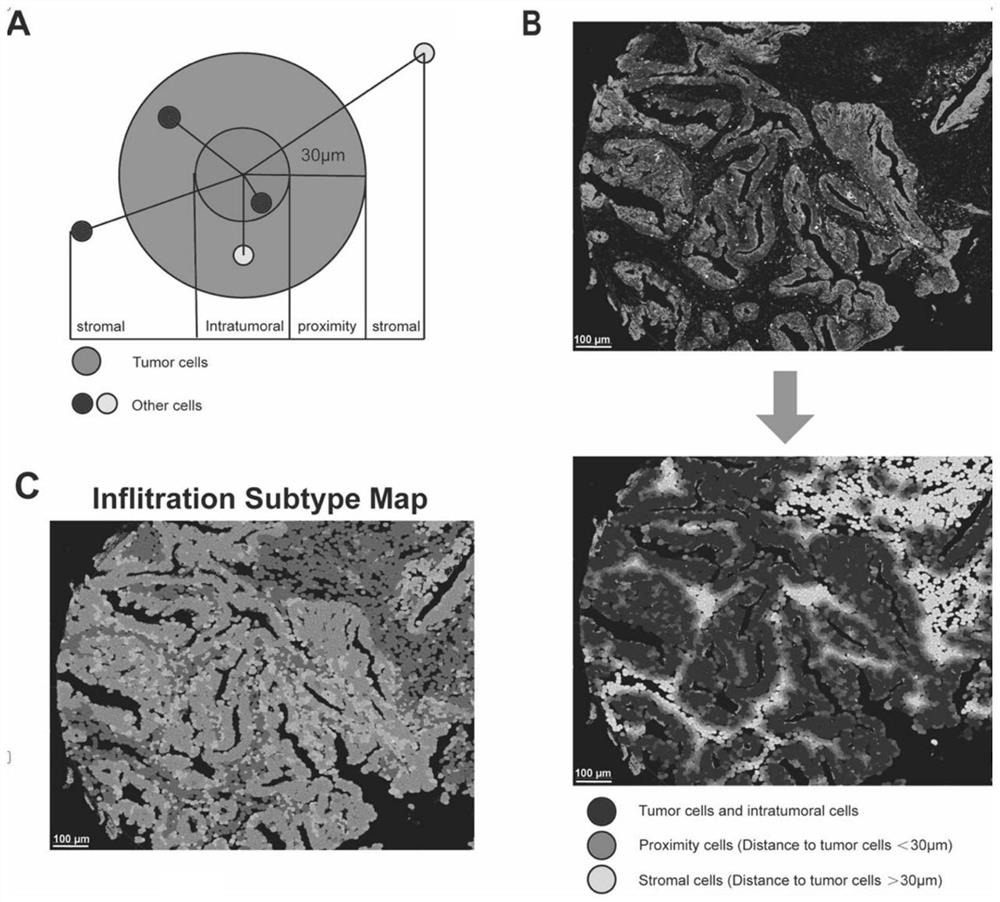Application of reagent for detecting spatial distribution of immune checkpoints in preparation of tumor treatment and prognosis products
An immune checkpoint and spatial distribution technology, applied in the field of tumor diagnosis, can solve the problems of insufficient evidence, lack of accurate prediction of the efficacy of immunotherapy in tumor patients, and unsatisfactory immunotherapy effect.
- Summary
- Abstract
- Description
- Claims
- Application Information
AI Technical Summary
Problems solved by technology
Method used
Image
Examples
Embodiment 1
[0025] Samples including stage I-IV tumor lesions, paracancerous tissues, and tissue samples before and after immunotherapy were taken, and tissue HE staining was used to preliminarily determine the spatial characteristics of the tissue, grouped and numbered, and a follow-up cohort study was carried out at the same time.
[0026] Then multiple fluorescent staining was applied to the tumor tissue and paracancerous tissue samples for molecular markers TIM-3, PD-1, CD8, PAN-CK, DAPI staining (Opal assay kit, PerkinElmer), and Vectra Polaris (PerkinElmer) for Slice panoramic scanning imaging, the specific steps are as follows:
[0027] 1) Dewax, bake the slices in a 60°C oven for 1 hour, soak in xylene for 3 minutes and 3 times;
[0028] 2) rehydration, rehydration in gradient ethanol solutions with volume fractions of 100%, 95%, 70%, and 50% respectively;
[0029] 3) For antigen retrieval, select the antigen retrieval solution (citric acid or EDTA) according to the requirements ...
Embodiment 2
[0045] Apply artificial intelligence, machine learning and other bioinformatics technologies to explore the distribution and interaction between TIM-3 and other immune checkpoints such as PD-1 in the tumor microenvironment, as well as the distribution and interaction of extracellular matrix and immune cells in the microenvironment, and analyze tumor subtypes , to establish a spatial orientation ( figure 2 ).
[0046] In order to establish a predictive model for the spatial interaction of novel immune checkpoints ( image 3 ), first randomly divide tumor patients into two groups: training cohort and verification cohort, according to immune checkpoints and the spatial state of immune cells, we get 21 types of immune cell states, and then according to these 21 spatial states and clinical TNM staging, we establish LASSO-COX model ( image 3 , a), and defined six of the 21 spatial states (intratumoral CD8+TIM3+, intratumoral CD8+PD1+, proximity TIM3+, intratumoral PD1+, distal P...
Embodiment 3
[0048] Taking human rectal cancer patients as an example, the nomogram was used as a quantitative tool ( Figure 4 , a), through the establishment of spatial immune checkpoint TIM-3, PD-1 interaction to establish a prediction model to predict the patient's 3-year and 5-year mortality, successfully predicting the prognosis of rectal cancer patients, the results are as follows Figure 4 , b, the predicted likelihood is consistent with the actual observed likelihood.
PUM
 Login to View More
Login to View More Abstract
Description
Claims
Application Information
 Login to View More
Login to View More - R&D
- Intellectual Property
- Life Sciences
- Materials
- Tech Scout
- Unparalleled Data Quality
- Higher Quality Content
- 60% Fewer Hallucinations
Browse by: Latest US Patents, China's latest patents, Technical Efficacy Thesaurus, Application Domain, Technology Topic, Popular Technical Reports.
© 2025 PatSnap. All rights reserved.Legal|Privacy policy|Modern Slavery Act Transparency Statement|Sitemap|About US| Contact US: help@patsnap.com



